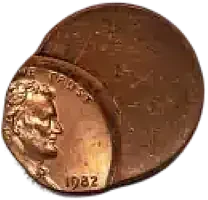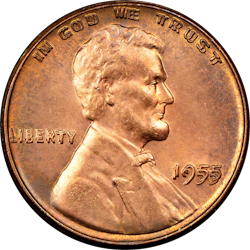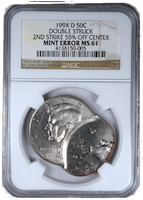Error Coins: Collecting Unusual Minting Mistakes and Value Tips
Error coins are some of the most fascinating and conversation-worthy pieces in the world of coin collecting. These coins are produced with flaws during the minting process—whether it’s a misaligned strike, a double image, or a clipped edge. While mistakes in manufacturing typically lower a product’s value, the opposite is often true in numismatics. In many cases, error coins are not only rare but also highly desirable due to their uniqueness, historic appeal, and market demand.
Whether you’re a beginner just starting to explore the world of rare coins or a seasoned collector looking to expand your portfolio, understanding error coins can add a compelling layer to your numismatic journey. This guide explains what error coins are, how to identify them, tips for building a collection, and why they hold lasting appeal in the collectibles market.
What Are Error Coins?
Error coins are coins that contain mistakes made during the minting process at official mints such as the United States Mint. These errors occur when mechanical or human mishaps disrupt the coin production process. The resulting flaws may be aesthetic, structural, or compositional. What makes these coins special is that most errors are caught and destroyed before leaving the mint. The few that slip through become collector’s items.
Here are the most commonly encountered types of error coins:
- Off-Center Strikes – These coins were struck outside of their proper alignment, leading to designs that are partially missing. The percentage of the off-center strike can impact the coin’s value. A coin that is 50% off-center with a full visible date is generally more valuable.
- Double-Die Coins – One of the most popular types of error coins, these occur when the die (the tool used to strike the coin) has a doubled image. This results in a coin that looks like it has overlapping or duplicated letters and numbers.
- Clipped Planchets – When the blank metal disks (called planchets) are punched incorrectly, parts of the coin are missing—often in a crescent shape. These are known as clipped planchet errors.
- Die Cracks and Cuds – These are raised lines or blobs that appear on the coin’s surface due to cracks or breaks in the dies themselves. “Cuds” are large blobs typically appearing at the edge of the coin, while die cracks can stretch across the surface.

Famous Error Coins in Numismatics
Over the years, certain error coins have achieved legendary status among collectors, driving up both interest and prices. These iconic mistakes are widely recognized, and some have even appeared in auction houses, fetching impressive sums due to their rarity and historical significance.
- 1955 Lincoln Cent Double Die – Perhaps the most famous error coin in U.S. history, this penny features dramatic doubling on the date and lettering. It remains a sought-after treasure for collectors and regularly appears in top error coin lists.
- 2004 Wisconsin Extra Leaf Quarter – A variation of the Wisconsin state quarter featuring an additional leaf near the corn stalk. It exists in “high leaf” and “low leaf” versions, and both are worth far more than face value.
- State Quarters with Partial Strikes – Some statehood quarters were released with missing design details due to partial or misaligned strikes.
- Die Clash Silver Dollars – In these cases, the design from one side of the coin appears as a mirror image on the opposite side, caused by dies striking each other without a planchet in between.
To explore more collectible U.S. coins beyond error types, visit our complete U.S. Coins guide.

How to Collect and Identify Error Coins
Building a collection of error coins can be a fun, educational, and potentially profitable endeavor. Because errors are generally unintended, each one is unique. No two flawed coins are exactly alike. Here are some steps and tips for identifying and collecting error coins:
- Learn to Identify Errors – Use trusted books, online coin forums, and reputable guides to educate yourself. Compare images of known errors with coins in your collection. Familiarize yourself with what legitimate minting mistakes look like, so you can avoid altered or counterfeit coins.
- Buy from Trusted Sources – When starting out, it’s best to buy certified error coins from reputable dealers or online marketplaces that work with grading services like PCGS or NGC. These coins will come in tamper-evident holders and include a certification of authenticity.
- Inspect Pocket Change – Many collectors start by hunting through their spare change. While most modern coins are mass-produced with great precision, the occasional error still slips through.
- Use a Magnifier or Loupe – Minor errors may be hard to spot with the naked eye. Use a 5x to 10x magnifier to closely examine coin details for doubling, misalignment, or damage.
- Store Coins Safely – Once you’ve acquired error coins, protect them using soft holders, airtight containers, or coin flips. Avoid touching the surface of the coin, especially with bare hands, to preserve its value.
Looking for more unusual collectibles? Explore our growing Exonumia collection, featuring tokens, medals, and other non-currency coinage.

Why Error Coins Are Worth Collecting
Beyond their visual intrigue, error coins represent a fascinating intersection of art, history, and mechanical process. For many collectors, the value goes beyond money. Each coin tells a story of how human or machine error led to a small but unique mistake in an otherwise controlled process. Because of their rarity and the unpredictability of such mistakes, error coins often retain strong long-term value and collector interest.
Some reasons collectors seek out error coins include:
- Scarcity – True mint errors are rare, and scarcity increases value.
- Visual Appeal – Error coins often display unusual or dramatic designs.
- Investment Potential – Certain error coins can appreciate significantly in value over time, especially if certified and well-preserved.
- Educational Value – Studying minting errors offers a hands-on way to learn about coin production, die systems, and historical minting practices.
Final Thoughts on Error Coins
Error coins are a reminder that even mistakes can become meaningful. In the world of numismatics, what begins as an accident can end up being a prized possession. Whether you’re interested in building a high-end collection of certified error coins or simply want to see what hidden gems you might find in your pocket change, this unique corner of the coin collecting world has something for everyone.
Explore more error coin varieties, learn how to detect fakes, and stay up to date with the latest market trends at FindRareCoins.com.

 '
' 


